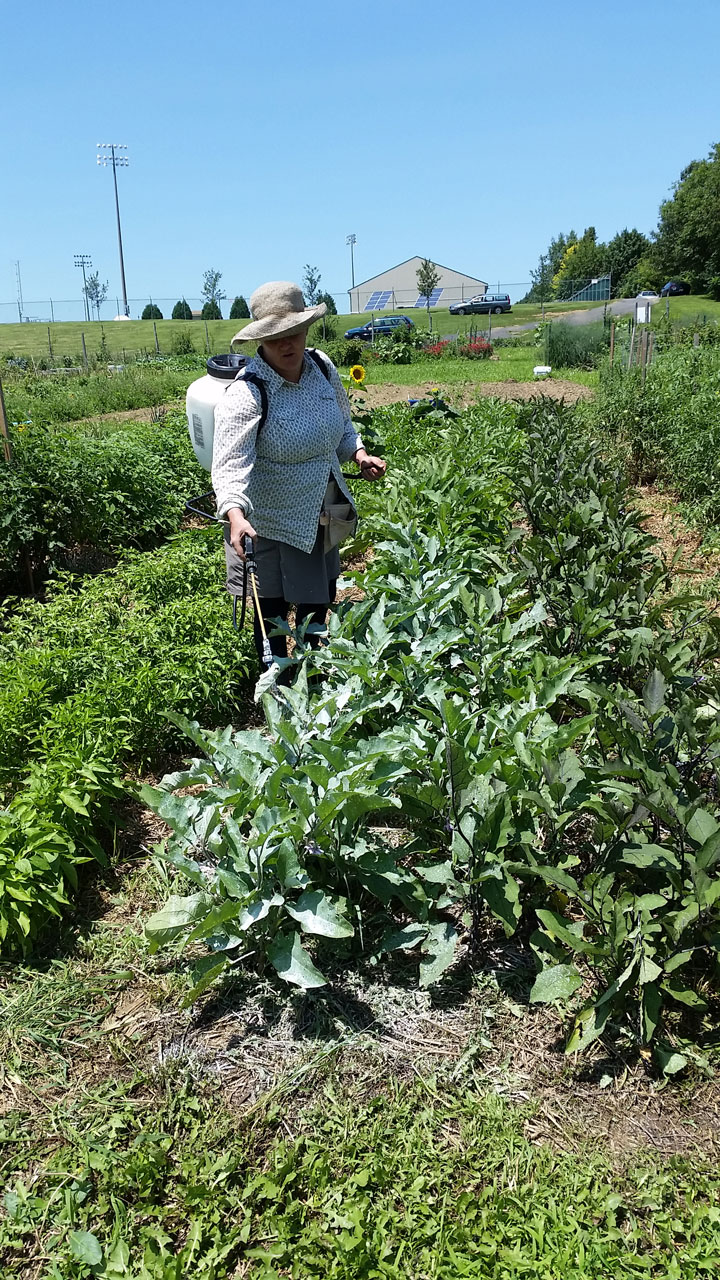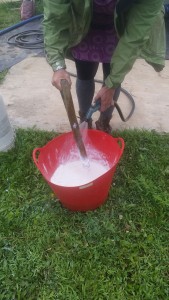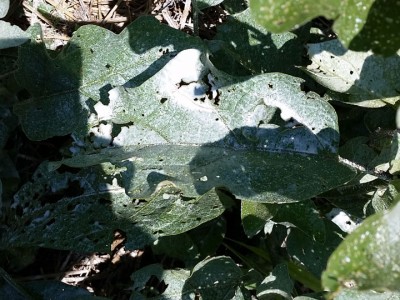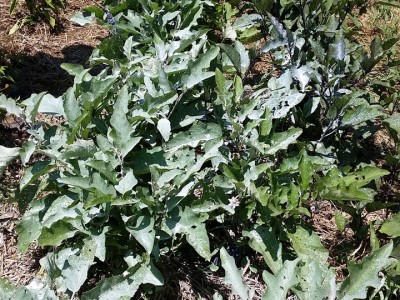There aren’t many things that we spray at LaFarm. But in the wake of the storm it is more important than usual for us to do everything we can to protect our plants from any further damage. That’s why right now, when the worst of the pests are around, we’re protecting our most vulnerable crops with Kaolin Clay.
Kaolin Clay is a completely organic substance, it is in fact a finely ground clay powder. When mixed with water, Kaolin Clay can be sprayed on plants to coat them in this powder, which (with an effectiveness that surprised me) confuses pests, who confusedly find that instead of a tasty eggplant leaf, they’ve landed on a weird clay bush. This way, it doesn’t actually kill anything or disrupt the ecosystem, it just protects the plants you spray it on.
Kaolin Clay is not completely effective for all plants against all pests, but it’s definitely effective enough that we spray our squash (especially young transplants) to protect against cucumber beetles or squash bugs, our eggplant to protect against flea beetles, Colorado potato beetles or anything else that might want a munch on them, and on a few others like Brussels Sprouts.
To use Kaolin Clay, you first need to mix it with water. We go for the Surround brand Kaolin Clay, which calls for 3 cups of Clay to be mixed with every 1 gallon of water. We put the Clay in a bucket and then add water and stir until the Clay is mixed enough that it doesn’t stick to the bucket or whatever we use to stir. Also at this step it’s safest to wear something over your nose and mouth; although the clay is not toxic, you still don’t want powdered clay getting in your lungs.
It is most advisable to spray on days without direct sunlight. When the liquid pools on a plant, it can magnify sunlight, which can burn the plant, making it less healthy, defeating the purpose of spraying. At the same time, you do not want to spray if it’s going to rain soon. Rain can wash off the clay, especially if it’s been applied only recently.
We use a hand-pumped backpack sprayer, dumping in the mixture from the bucket once it’s ready. It’s theoretically possible to spray it from a smaller spray bottle if you only needed enough for a plant or two. Some farmers will mix fish emulsion into the clay (fish emulsion can soak into the leaves of mature plants, giving them additional nutrients) but this is not advised by the USDA. It’s important to spray every leaf of any plant you’re trying to protect, and both the tops and bottoms of each leaf. Otherwise it would be like building a wall around half of a town to protect against invasion: it won’t help when they come from the other side.
- Sarah diligently spraying Surround on our eggplant
- Each leaf should be coated with the white clay
- Once it drys, the clay just makes a plant look a few shades lighter than it used to be.
After spraying, most pests will be confused by the clay and not eat your plants. That is especially important if you have hail- and flea beetle-damaged crops like our eggplant, or if you’re about to transplant 50 zucchini when you’ve noticed some cucumber beetles around the farm.
Happy Farming!
-Joe Ingrao, Summer 2015 EXCEL Scholar




